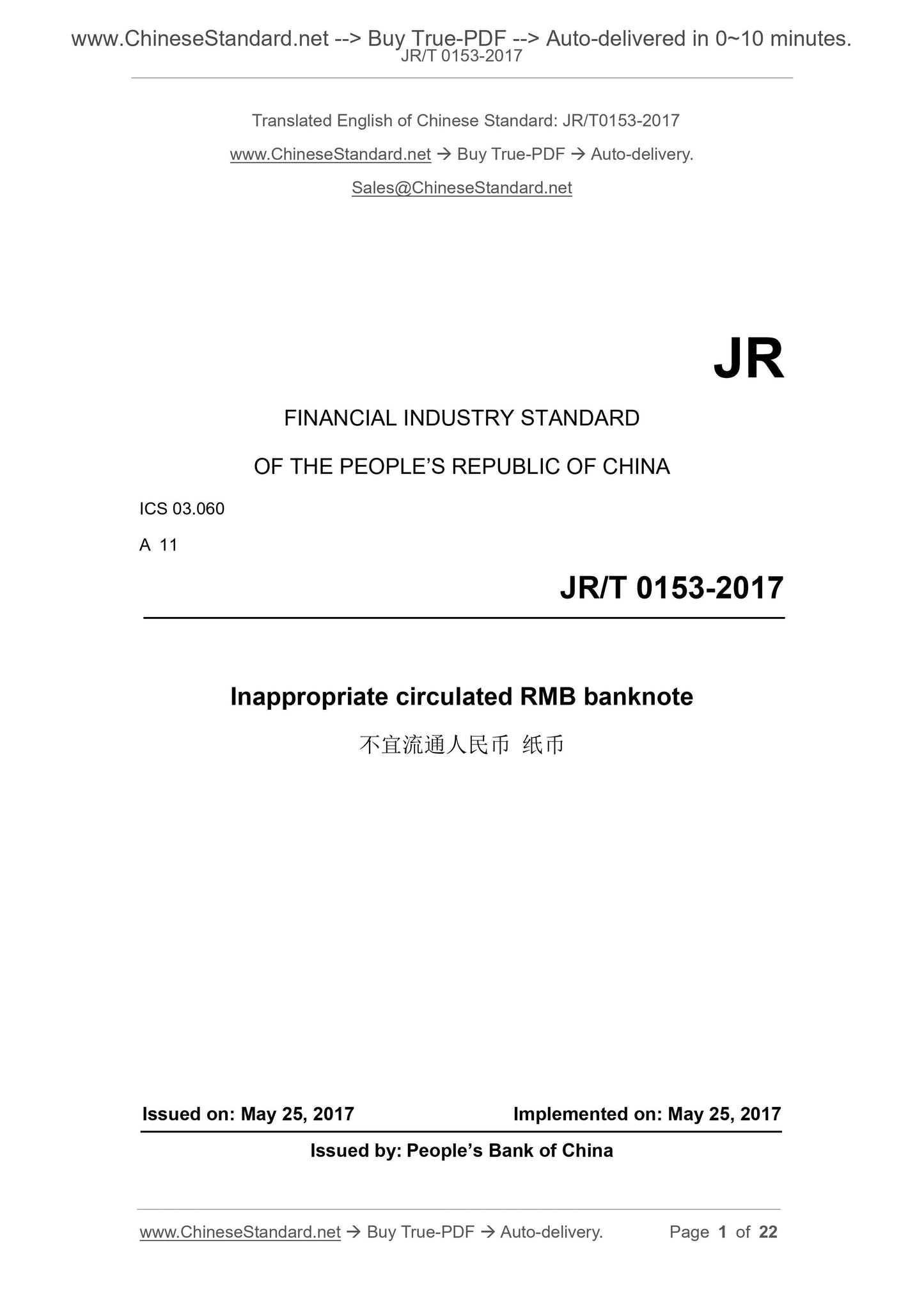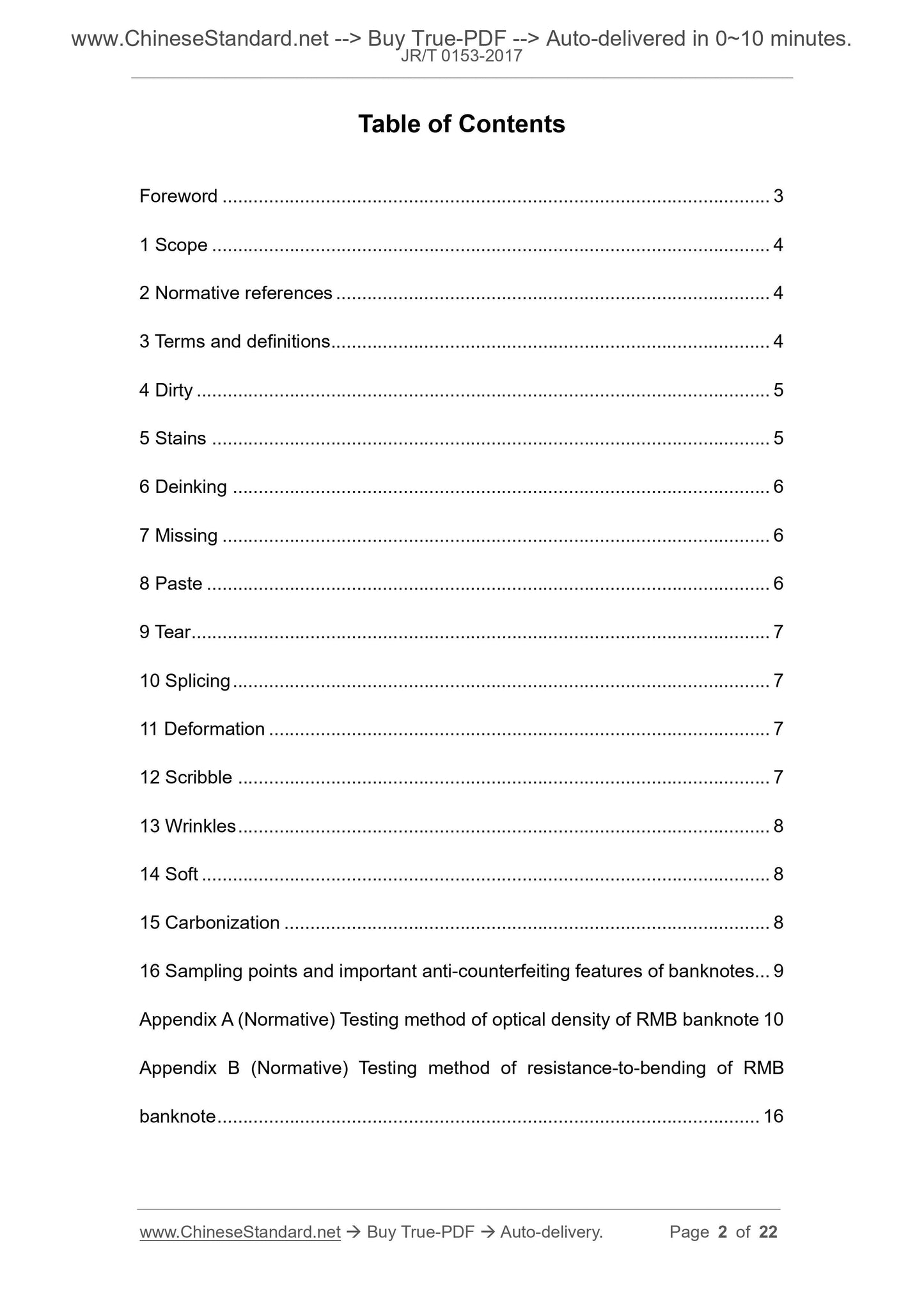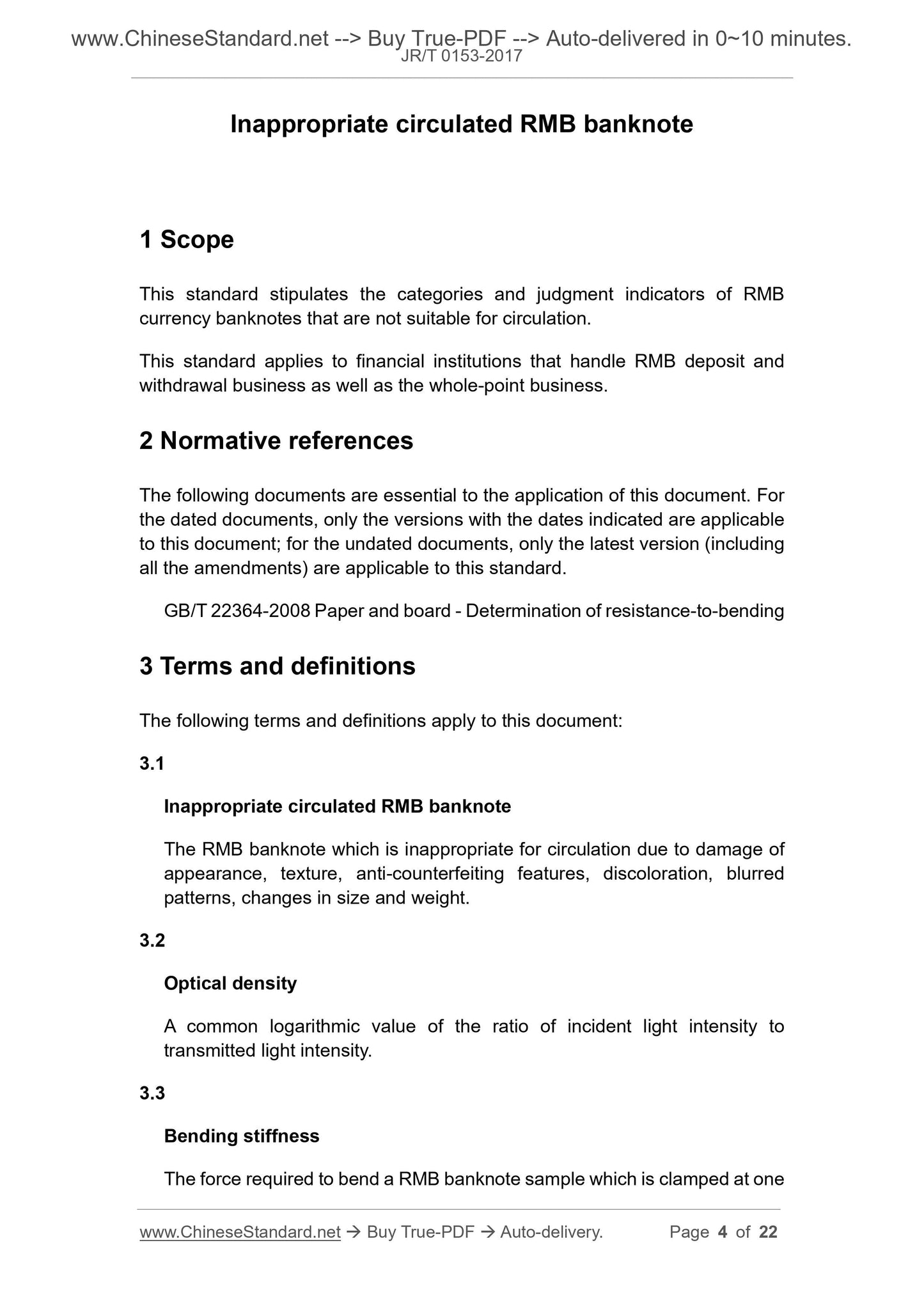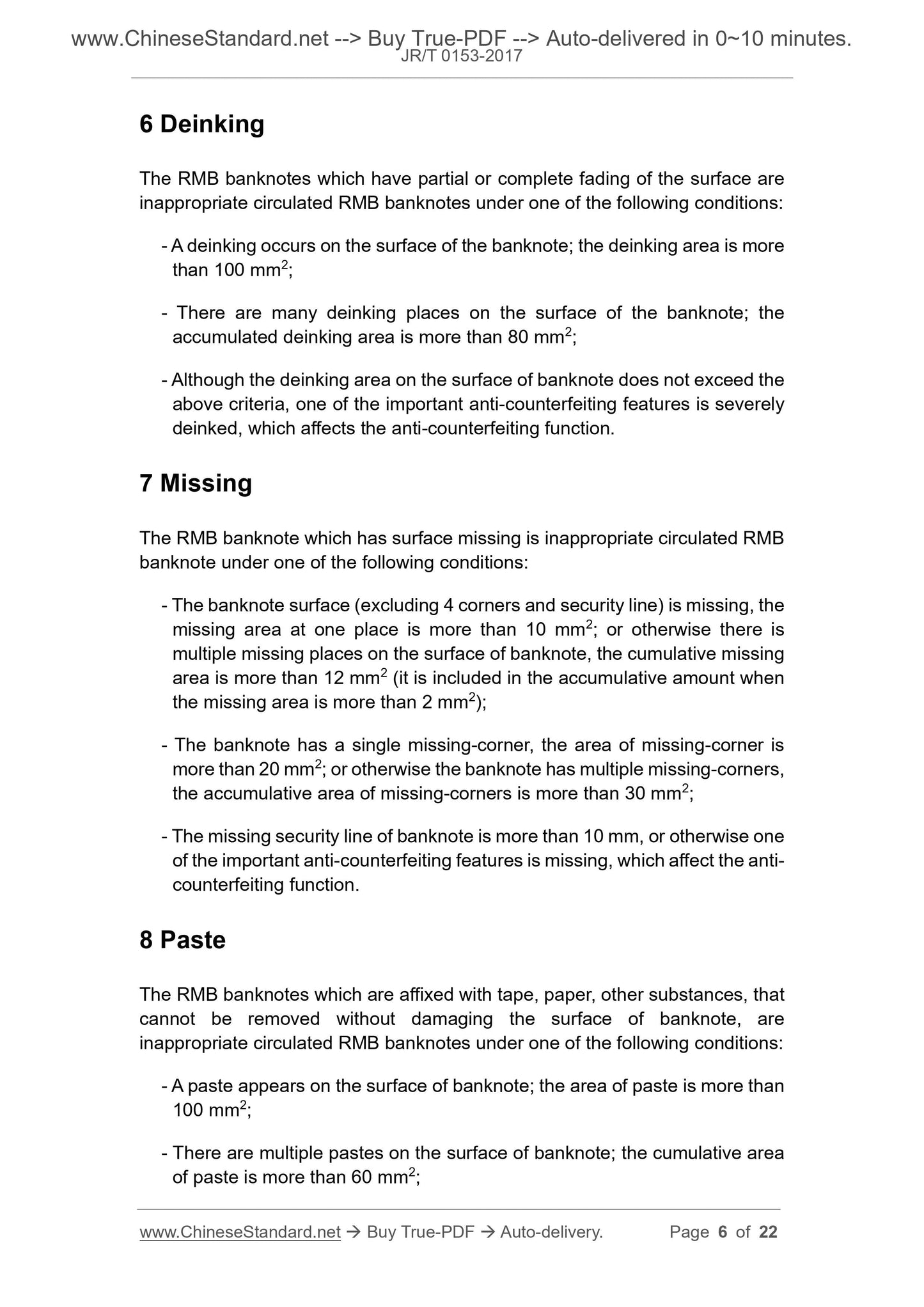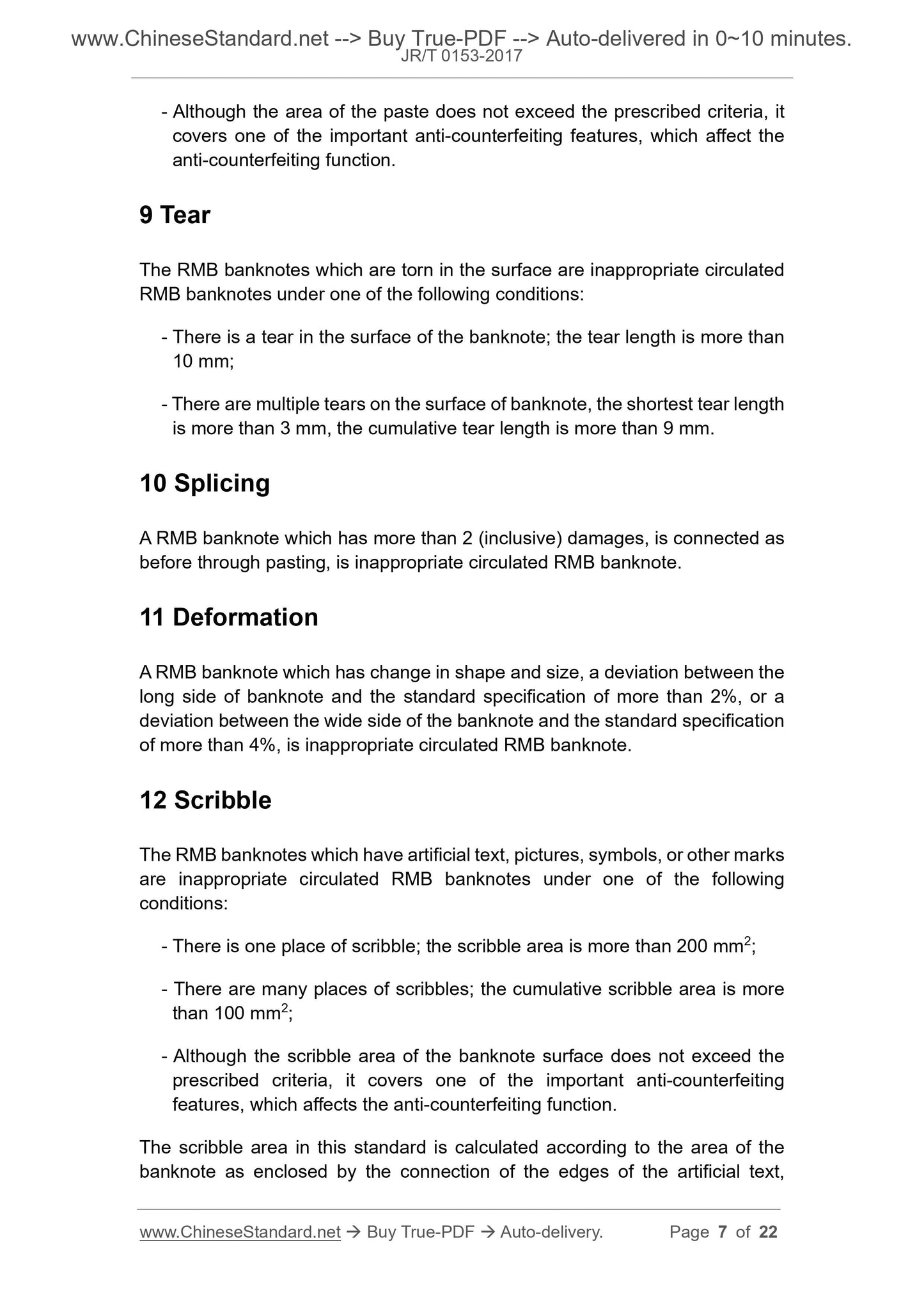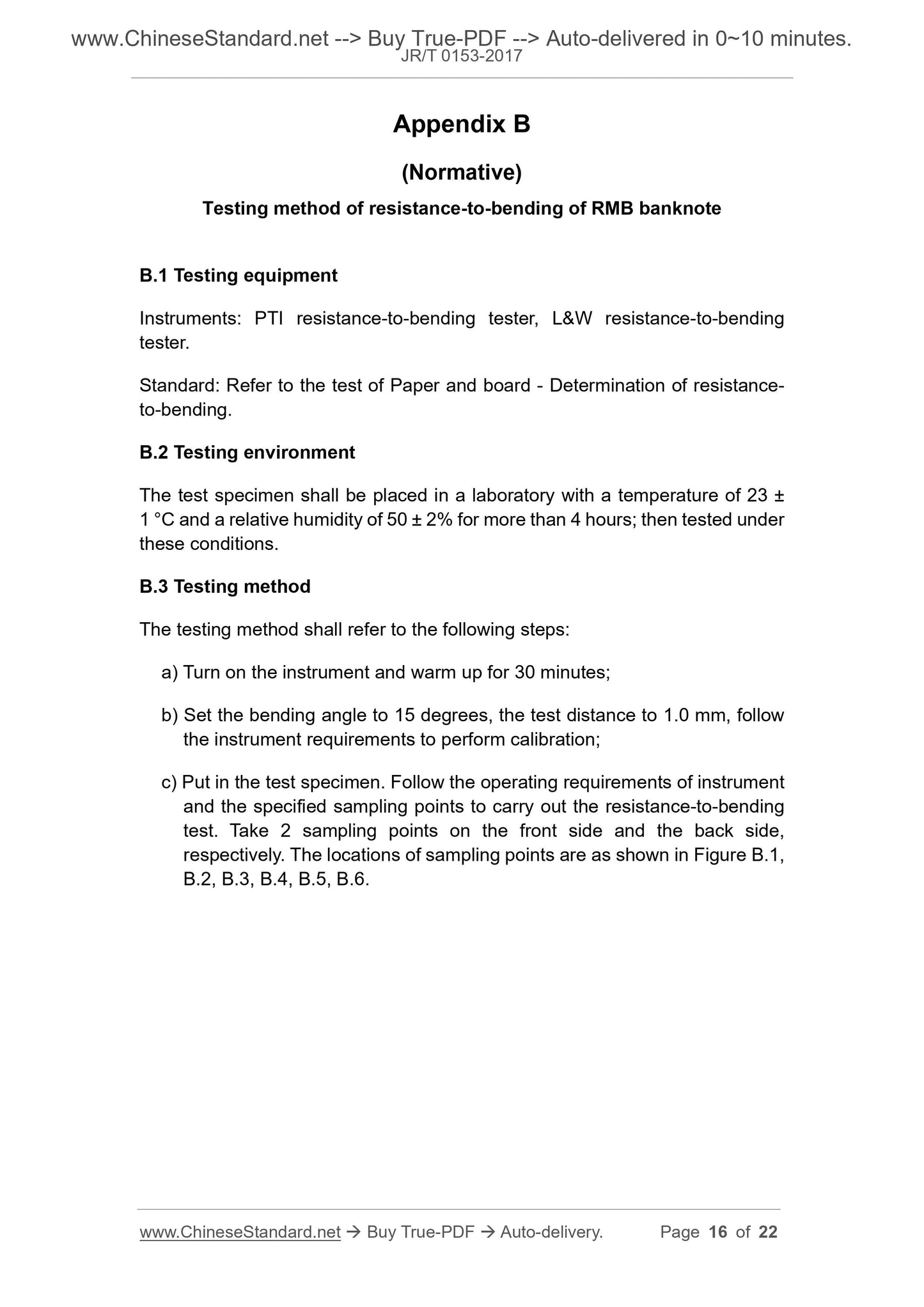1
/
of
6
www.ChineseStandard.us -- Field Test Asia Pte. Ltd.
JR/T 0153-2017 English PDF (JR/T0153-2017)
JR/T 0153-2017 English PDF (JR/T0153-2017)
Regular price
$170.00
Regular price
Sale price
$170.00
Unit price
/
per
Shipping calculated at checkout.
Couldn't load pickup availability
JR/T 0153-2017: Inappropriate circulated RMB banknote
Delivery: 9 seconds. Download (and Email) true-PDF + Invoice.Get Quotation: Click JR/T 0153-2017 (Self-service in 1-minute)
Newer / historical versions: JR/T 0153-2017
Preview True-PDF
Scope
This standard stipulates the categories and judgment indicators of RMBcurrency banknotes that are not suitable for circulation.
This standard applies to financial institutions that handle RMB deposit and
withdrawal business as well as the whole-point business.
Basic Data
| Standard ID | JR/T 0153-2017 (JR/T0153-2017) |
| Description (Translated English) | Inappropriate circulated RMB banknote |
| Sector / Industry | Finance Industry Standard (Recommended) |
| Classification of Chinese Standard | A11 |
| Word Count Estimation | 17,123 |
| Date of Issue | 2017-05-25 |
| Date of Implementation | 2017-05-25 |
| Regulation (derived from) | The financial industry standard ��Unnecessary circulation of Renminbi banknotes�� was formally released; Industry standard registration announcement No.3 of 2018 (general No.219) |
| Issuing agency(ies) | People's Bank of China |
Share
